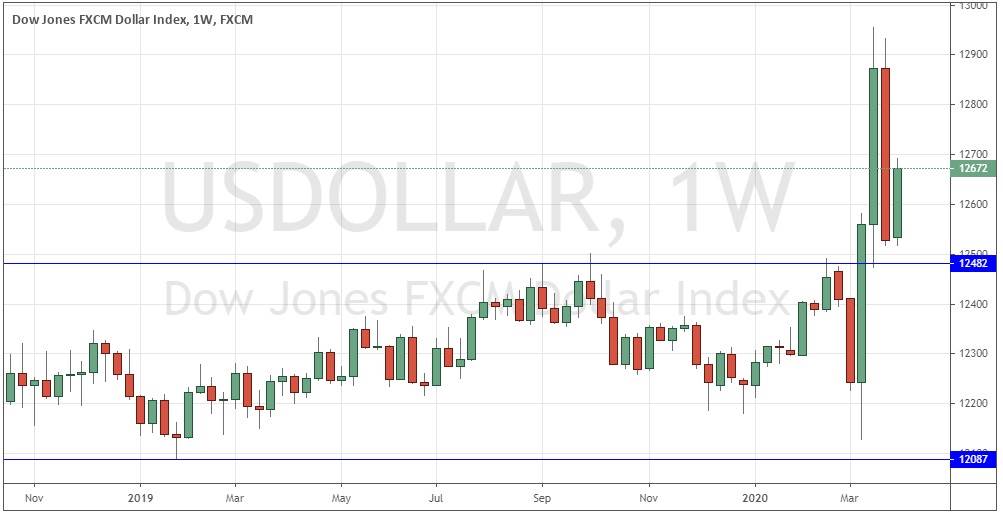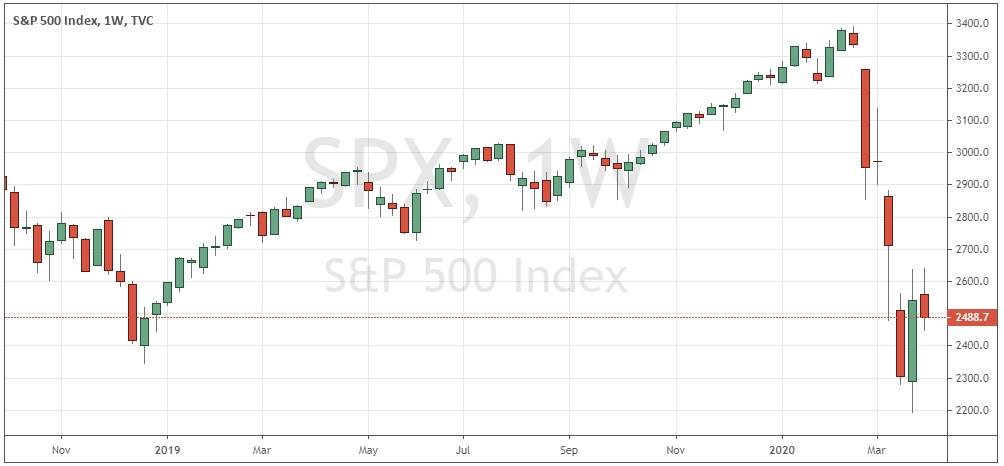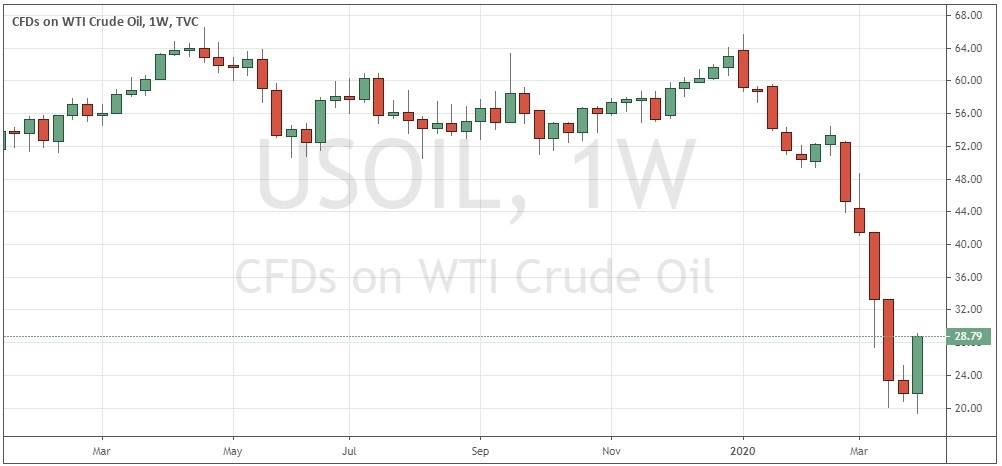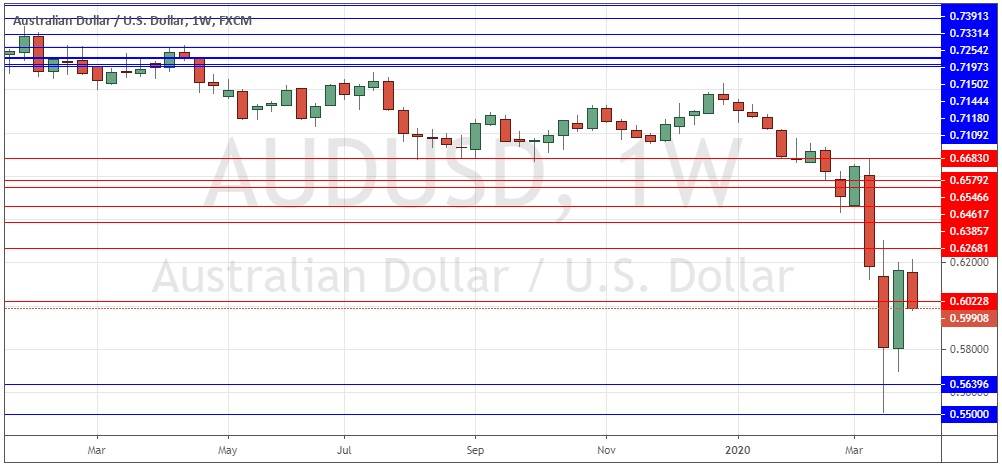The difference between success and failure in Forex trading is very likely to depend upon which currency pairs you choose to trade each week, and not on the exact trading methods you might use to determine trade entries and exits. Of course, the current market environment is one of crisis and very high volatility, and price movements are entirely dominated by the economic impact of the coronavirus pandemic. That is the dominant factor to consider in trading any market today.
Big Picture 5th April 2020
In my previous piece last week, I forecasted that the best trades were likely to be short of the S&P 500 Index and WTI Crude Oil. Over the week, the S&P 500 Index fell in value by 2.75%, but WTI Crude Oil rose by 32.06%, so the average loss here was 14.66%.
Last week’s Forex market saw the strongest rise in the relative value of the U.S. Dollar, and the strongest fall in the relative value of the Euro.
Fundamental Analysis & Market Sentiment
The world is not coming to an end, but we are living in an extraordinary time of global health crisis, the type of which has not been seen in one hundred years. There is a great deal of fear and panic, but it is important to remember that the evidence shows that the vast majority of people are going to survive and be healthy.
In time such as these, it is extremely difficult to make very short-term market forecasts, as the crisis can change focus day by day, strongly affecting sentiment and market movements. However, medium-term forecasts are easier to make as high levels of volatility tend to accompany see-sawing price movement.
We have seen the epicenter of the global pandemic move into the United States, especially New York, with fatalities rising strongly also in the U.K. It looks as if this wave may have already peaked in Italy and Spain, the European countries with the highest total death tolls to date.
All stock markets are now in technical bear markets (decline of more than 20% from peak). The U.S. stock market was temporarily boosted by a $2.2 trillion emergency stimulus package. Nevertheless, this seems to have been a fake rally, as the data suggests the daily death toll will continue to rise exponentially in the U.S. while some of the population, punditry and politicians still remain in a state of denial concerning the severity of the crisis.
It is clear that this crisis will enforce severe economic restrictions in all affected countries which will need to last for several weeks or even months. The only given is that stock markets and GDP generally will take severe hits, with Goldman Sachs now forecasting a 34% drop in U.S. GDP in the second quarter of 2020 and U.S. unemployment topping at 15%. The stock market crash we are seeing is comparable to 2008 and even 1929 so far. In fact, the speed of the initial drop of 20% from the all-time high price took only 15 market days to happen, compared to 30 days in 1929.
It seems clear that we will see a continued level of high market volatility. Prices are likely to depend upon how the U.S.A. and European nations cope with the spread of the virus, and whether there are any signs of successful containment as we seem to have seen in China, South Korea, Singapore, and Hong Kong. There is some good news in many European countries as the rate of increase in confirmed new infections slows down in many places. It should be remembered that deaths tend to log new infections by approximately 3 weeks.
Technical Analysis
U.S. Dollar Index
The weekly price chart below shows last week printed a bullish inside candlestick which closed very near to the high of its range. It made a fairly strong move back in the direction of its long-term trend after declining from a new 17-year high price last week on extremely high volatility. This would normally be a bullish sign, but we have declining volatility within a congested area which means next week’s movement is difficult to predict. Overall, it seems most likely that the U.S. Dollar will rise over the coming week, due to its long-term bullish trend.
S&P 500 Index
The major U.S. stock market index – the biggest market index in the world – made a downwards move on declining volatility after making its highest weekly rise in decades last week, after closing at its lowest weekly close in three years two weeks ago. It is hard not to see further downwards movement as likely over the near to medium term due to the worsening, Great Depression-like situation regarding demand and output in both the U.S.A. and globally. This means that we are unlikely to have seen the bottom of this bear market yet.
WTI Crude Oil
WTI Crude Oil made a very strong bullish move last week, rising by about 32% in value after reaching a low just below $20, after making its lowest weekly close in 18 years. The price is currently strongly affected by rumors of dealings between Russia, Saudi Arabia, and OPEC generally. This means that we have very high volatility, but price movements are impossible to predict with any probability. Day traders may look to trade the volatile swings in either direction on price action, but this is a highly risky asset to be involved in right now.
AUD/USD
The AUD/USD currency pair made a downwards move on declining volatility after bouncing back last week, after closing at its lowest weekly close in many years two weeks ago. It is hard not to see further downwards movement as likely over the near to medium term due to the worsening, Great Depression-like situation regarding demand and output in both the U.S.A. and globally which will probably continue to hit commodity currencies, especially the Australian Dollar. This means that we are likely to see further downwards movement over the coming week if the price holds below new resistance near the big round number at 0.6000.
Conclusion
This week I forecast the best trades are likely to be short of the S&P 500 Index below 2450 and the AUD/USD currency pair below 0.5990.





